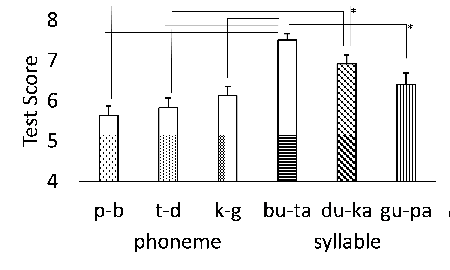
Katsumi NAGAI (Kagawa University)
When learners of English practice minimal pairs (e.g., light-right), they are pronouncing not only target consonants (/l/-/r/) but also consonant-vowel continuations (/lai/-/rai/). In the case of non-continuous consonants (e.g., /p/-/b/), it is more difficult to pronounce consonantal phonemes alone, and what is actually contrasted is a combination of consonants (C) and vowels (V) (e.g., /pa/-/ba/). Because the consonant-vowel combination (CV) corresponds to a single Kana character in Japanese, would practice of CV combination contrasts yield better learning than practice of consonantal phoneme? In this experiment we presented consonantal pairs (e.g., /apip/-/abib/ for /p/-/b/) and syllabic pairs (e.g., /apap/-/abub/ for /pa/-/bu/) and asked participants to learn the meaning of words. Participants had to learn that aspiration before consonantal burst was a phoneme of their target language, and that both voicing of the first consonant and bursting of the second consonant were free variations. Results indicated that CV practice was more successful than consonant practice.
